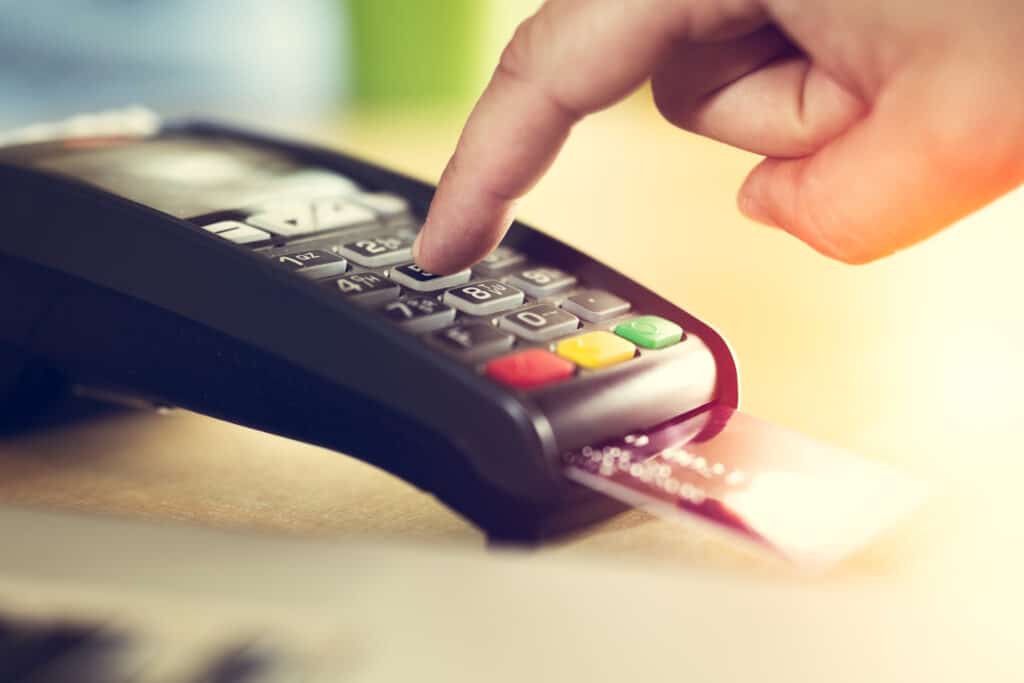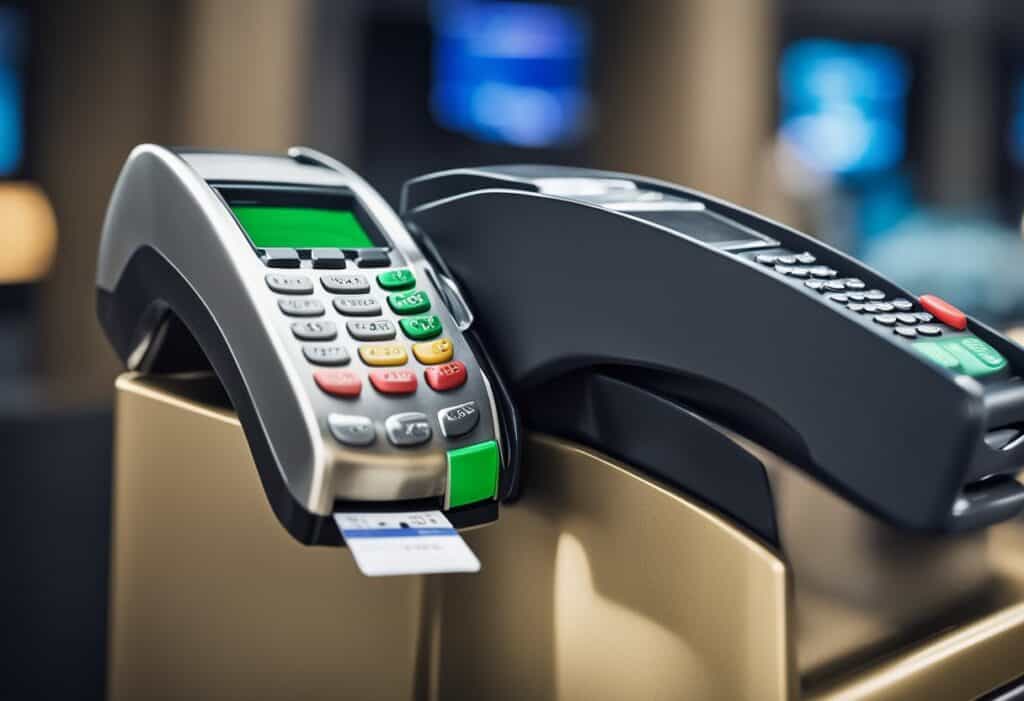When you initiate a credit card refund, typically you expect the amount to be credited back to the same card you used for the purchase. This is the common practice in credit card transactions, ensuring a seamless reversal of your payment. However, situations may arise where your original card is no longer active due to cancellation or expiration. In such cases, you might wonder if the refund can be processed to a different credit card instead.

Navigating the refund process in such scenarios can be confusing. Merchants often prefer to issue refunds to the same card used for payment to prevent fraud and to keep within the guidelines set by credit card companies. However, there might be flexibility depending on the merchant’s policies, and alternate refund methods such as store credit, gift cards, or even cash can sometimes be provided upon request.
Want to see your credit score for free and be able to use many financial tools right now? Just click here!
Key Takeaways
- Refunds are typically expected to be credited to the card used for the original purchase.
- Alternatives to receiving a refund on the original card may be available depending on the merchant’s policy.
- The correct handling of refunds is important for maintaining accurate financial records.
Understanding Credit Card Refunds
When you’re navigating the process of returning a purchase, knowing how credit card refunds work can make the experience smoother. Your credit card issuer plays a pivotal role in this process, but it starts with the merchant from whom you made the purchase.
Basics of Credit Card Refunds
Credit card refunds occur when a merchant sends the purchase amount back to your credit card account. This usually follows after you’ve returned a product or canceled a service. Refunds are not immediate, and they may take several days to appear on your account. Here’s a step-by-step overview:
- Initiate the refund: You request a refund from the merchant.
- Merchant processes the refund: The merchant agrees and processes the refund.
- Transaction reversal: The refunded amount is sent back to the credit card issuer.
- Credit appears on your statement: The issuer credits the amount to your card account, which will then reflect on your credit card statement.
Remember, the refunded money goes back onto the credit card used for the original purchase. The request for a refund has to be made within the policies set by the merchant, and the card issuer’s policies also apply.
The Role of Credit Card Issuer
Your credit card issuer is the financial institution that provided you with your credit card. When a refund is initiated, the role of the issuer is to credit the refunded amount back to your credit card account. They ensure that once the merchant has processed the refund, it is accurately reflected in your account.
The issuer’s involvement can include:
- Verifying the refund: Ensuring the returned amount is correct.
- Adjusting your balance: The refunded amount is removed from your statement balance.
- Handling disputes: If there is a problem with the refund, you might need to contact your issuer for resolution.
If your credit card had a balance at the time of the refund, the amount would be credited to your account and reduce the total amount you owe to the issuer. If you already paid off the purchase, the credit will sit in your account and apply to future purchases.
The Refund Process
When you initiate a refund, the goal is to reverse a charge from your credit card. The process involves both the merchant where the purchase was made and the card issuer that manages your account.
Initiating a Refund
To begin a refund, you’ll need to contact the merchant to return your item or report a billing dispute. Your refund method can either be in person, if the transaction occurred at a physical location, or online if you made the purchase through a website. It’s important to understand that a refund usually goes back to the original payment method; therefore, getting a refund to a different credit card is typically not an option.
- Online Account: If the purchase was online, most merchants would require you to log in to your account associated with the order to start the refund process.
- Direct Deposit: This is generally not used for credit card refunds but is applicable to bank account transactions.
- Return Method: You may have to follow specific steps provided by the merchant if it’s a physical return, such as obtaining a return authorization or including the original packaging.
Merchant and Issuer Communication
Once you’ve initiated the return with the merchant, they will communicate with your card issuer to remove the charge from your account.
- Refund Process: The merchant sends a request to your card issuer to credit your account for the returned amount. This might show up as a credit on your online account.
- Billing Dispute: If the refund is initiated due to a billing dispute, the card issuer might require additional documentation to process the refund.
Remember that the transaction between the merchant and card issuer often involves a waiting period before the funds are available again in your account—typically a few business days up to a week or more, depending on the merchant and card issuer policies.
Refund Challenges and Resolutions
Navigating through the maze of credit card refunds can sometimes be tricky, especially when you’re looking to get a refund to a different card than the one used for the transaction. Let’s dive into the specifics to ensure you’re well-informed on how to handle these situations. https://www.youtube.com/embed/lPmHs_sxPls
Refunds to Different Credit Cards
Typically, when you return an item, the refund amount is credited back to the card that was initially charged. Yet, in some scenarios, you might want the refund on a different credit card, perhaps due to a lost or stolen card. While most merchants and credit card issuers prefer to return the funds to the original card, you can contact the merchant and explain your situation. If the original card is closed and the account is in good standing, the card issuer may issue a check or deposit the refund into your bank account.
Chargebacks and Other Alternatives
If a direct refund is not feasible, you have the option of requesting a chargeback. This process allows you to dispute the charge directly with your credit card issuer. You need to provide evidence that supports your claim, and if the chargeback is approved, the refund amount will be credited back to your account. However, this should be considered a last resort, as it may affect your relationship with the merchant.
- Initiating a Chargeback: If necessary,
- Contact your credit card issuer.
- Provide documentation (e.g., receipts, correspondence with the merchant).
- Collaborate with them through the investigation process.
Dispute Resolution
In the event that you and the merchant cannot agree on the refund process or if you believe a charge is incorrect, you have the right to dispute the charge with your credit card company. Disputing a charge can be a more straightforward process than pursuing a chargeback because it involves less formal investigation. Also, if the refund involves a debit card, the process differs slightly since debit card refunds are usually processed faster but are subject to the availability of funds in the associated checking account.
- Steps for Dispute Resolution:
- Reach out to the merchant to attempt a resolution.
- Gather all relevant transaction details.
- Contact your credit card issuer if the issue isn’t resolved.
Remember, you have options and rights as a consumer when it comes to getting the refund that you deserve.
Impact of Refunds on Financial Health

When you receive a refund on a credit card, it can have implications for your financial health, particularly in areas such as your credit score and the way you earn and manage rewards.
Effect on Credit Score and Utilization
Credit Score: Your credit score may be indirectly affected by a refund. Since refunds lower your credit card balance, this could reduce your credit utilization ratio, which is the amount of credit you’re using compared to your credit limit. A lower credit utilization can be beneficial for your credit score, as it suggests that you’re using a smaller amount of your available credit.
- Credit Utilization Ratio: For example, if you have a credit limit of $5,000 and a balance of $2,000, your credit utilization is at 40%. If you receive a $500 refund, your balance drops to $1,500, bringing your utilization to 30%, which is closer to the recommended level of under 30%.
Managing Rewards and Balance
Rewards: If the purchase you were refunded for initially earned you rewards, like reward points or cash back, your refund could result in those rewards being deducted from your account. It’s important to monitor your rewards balance when you process a refund.
- Balance: In instances where your account is credited with a refund, leading to a negative balance, you might have a statement credit on your account. This could be used to offset future purchases, effectively giving you a balance that is less than zero.
- Statement Credit: For instance, if you have a negative balance of $50 and you buy an item for $70, your new balance would only be $20 since the statement credit would cover some of the cost.
